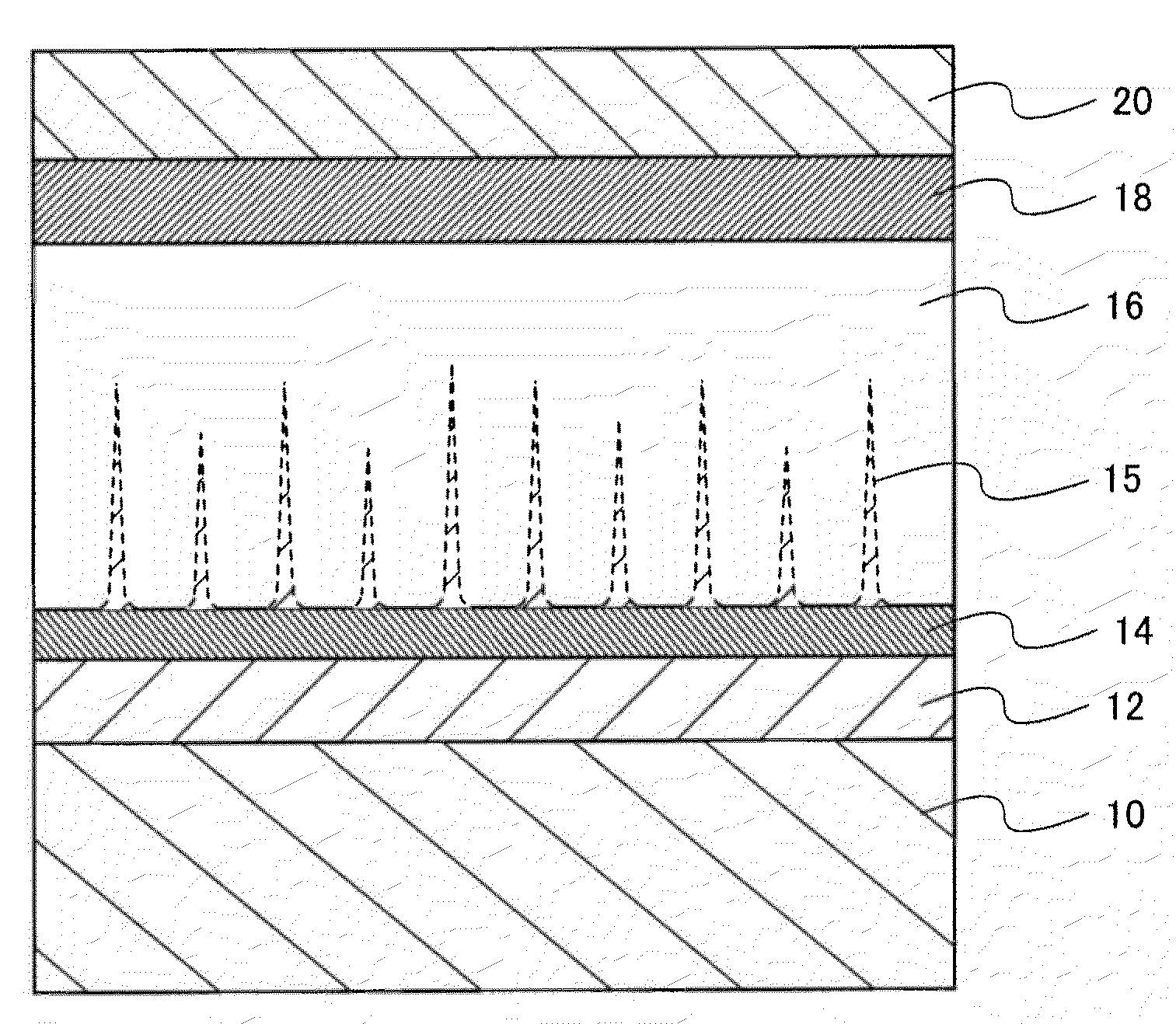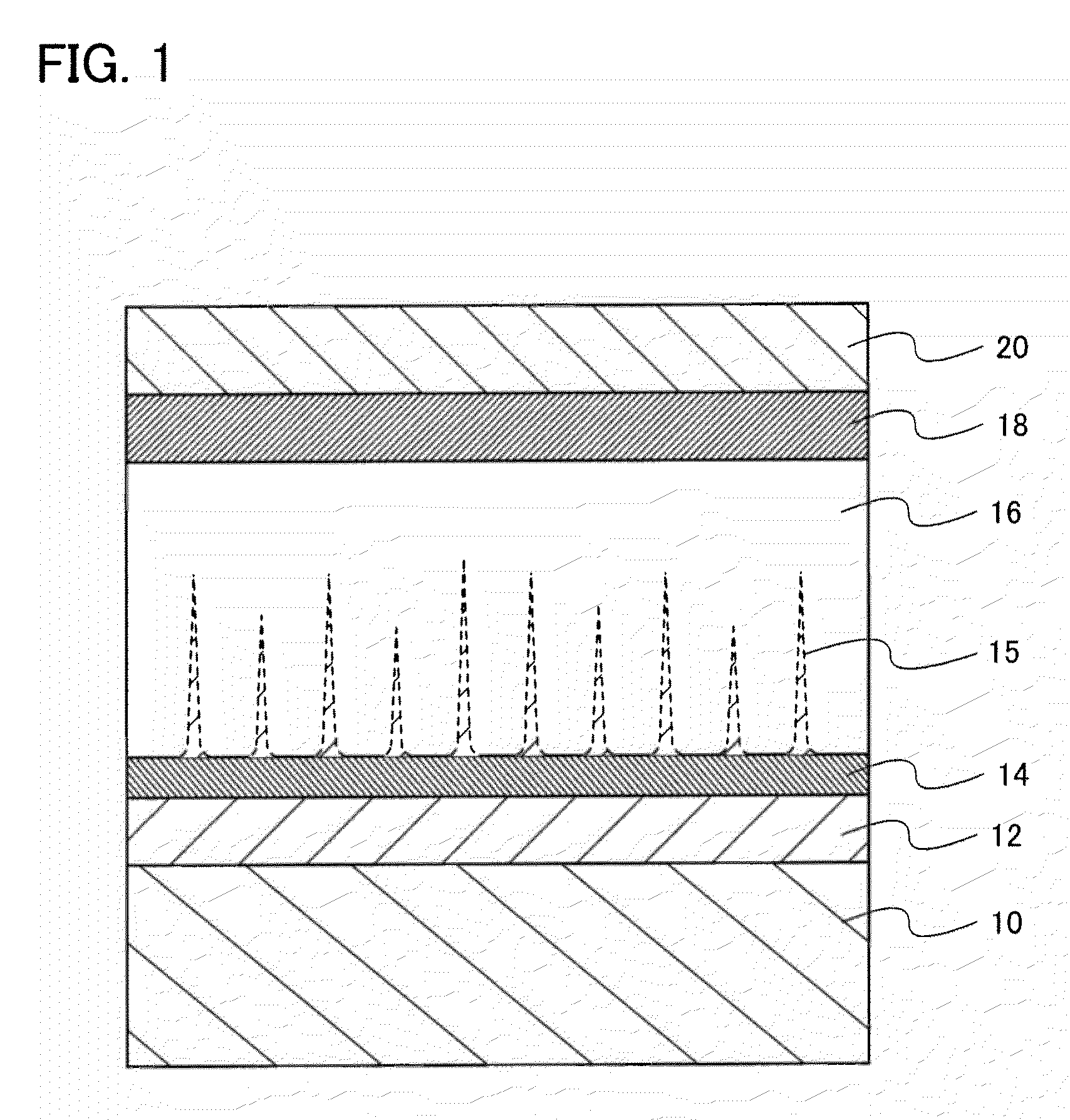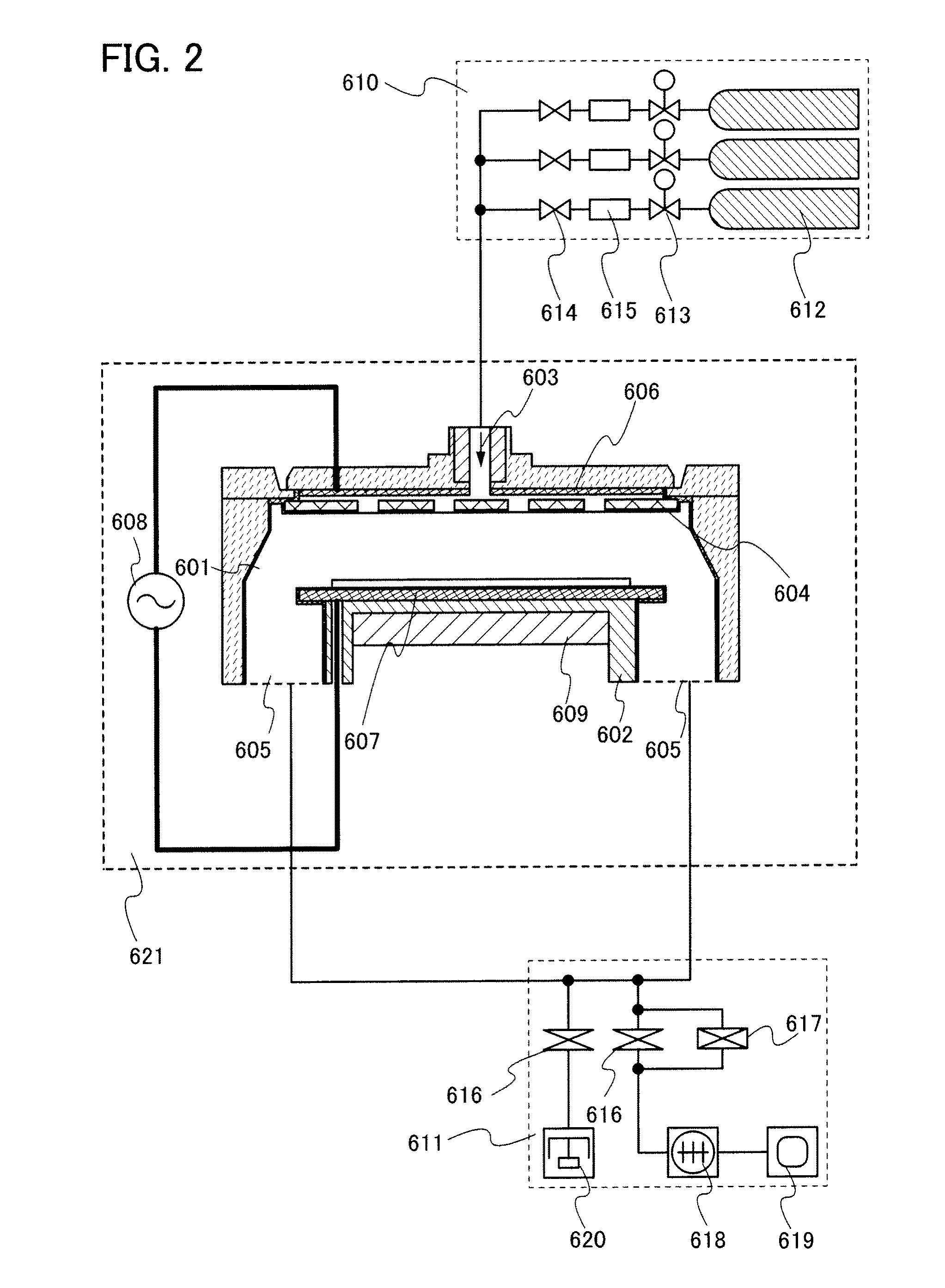Photoelectric conversion device and method for manufacturing the same
a technology photoelectric conversion method, which is applied in the direction of semiconductor device, coating, plasma technique, etc., can solve the problems of low penetration rate of photoelectric conversion device using amorphous silicon thin film, inability to overcome, and lower photoelectric conversion efficiency than that of bulk photoelectric conversion device, etc., to achieve high productivity, improve photoelectric conversion characteristics, and low cost
- Summary
- Abstract
- Description
- Claims
- Application Information
AI Technical Summary
Benefits of technology
Problems solved by technology
Method used
Image
Examples
embodiment 1
[0044]FIG. 1 shows a structure of a photoelectric conversion device according to this embodiment. A photoelectric conversion device shown in FIG. 1 has a structure including a first electrode 12 provided over a substrate 10, a first semiconductor layer 14 provided over the first electrode 12, a second semiconductor layer 16 provided over the first semiconductor layer 14, a third semiconductor layer 18 provided over the second semiconductor layer 16, and a second electrode 20 provided over the third semiconductor layer 18. The second semiconductor layer 16 is interposed between the first semiconductor layer 14 and the third semiconductor layer 18. The first semiconductor layer 14 and the third semiconductor layer 18 have opposite polarities. One of the first semiconductor layer 14 and the third semiconductor layer 18 is formed using a p type semiconductor, and the other is formed using an n type semiconductor. The second semiconductor layer 16 is formed using an i type semiconductor....
embodiment 2
[0075]In this embodiment, an example of a so-called integrated photoelectric conversion device is described, in which a plurality of unit cells is formed over one substrate and is connected in series to integrate a photoelectric conversion device. Hereinafter, a manufacturing process and a structure of an integrated photoelectric conversion device are described.
[0076]In FIG. 5A, a first electrode layer 102 is provided over a substrate 101. Alternatively, a substrate 101 provided with a first electrode layer 102 is prepared. The first electrode layer 102 is formed to a thickness of 40 nm to 200 nm (preferably, 50 nm to 100 nm) using a transparent conductive material such as indium oxide, an indium tin oxide alloy, zinc oxide, tin oxide, or indium tin oxide-zinc oxide alloy. The sheet resistance of the first electrode layer 102 may be about 20 Ω / square to 200 Ω / square.
[0077]The first electrode layer 102 can be formed using a conductive high molecular material (also referred to as a co...
embodiment 3
[0122]In this embodiment, an example of a photo-sensor device is described as another mode of a photoelectric conversion device.
[0123]FIG. 9 shows an example of a photo-sensor device according to this embodiment. This photo-sensor device shown in FIG. 9 has a photoelectric conversion layer 225 in a light receiving portion and a function of amplifying an output from the photoelectric conversion layer 225 and outputting the output by an amplifier circuit including a thin film transistor 211. The photoelectric conversion layer 225 and the thin film transistor 211 are provided over a substrate 201. As the substrate 201, a substrate having a light-transmitting property, such as a glass substrate, a quartz substrate, or a ceramic substrate can be used.
[0124]An insulating layer 202 including one or more of silicon oxide, silicon nitride oxide, silicon nitride, and silicon oxynitride is provided over the substrate 201 by a sputtering method or a plasma CVD method. The insulating layer 202 i...
PUM
 Login to View More
Login to View More Abstract
Description
Claims
Application Information
 Login to View More
Login to View More - R&D
- Intellectual Property
- Life Sciences
- Materials
- Tech Scout
- Unparalleled Data Quality
- Higher Quality Content
- 60% Fewer Hallucinations
Browse by: Latest US Patents, China's latest patents, Technical Efficacy Thesaurus, Application Domain, Technology Topic, Popular Technical Reports.
© 2025 PatSnap. All rights reserved.Legal|Privacy policy|Modern Slavery Act Transparency Statement|Sitemap|About US| Contact US: help@patsnap.com



